New England Area Flea Markets, August 2004
New England Area Ham - Electronic Flea Market *** DATES *** 2004 P 1 of 2
All events are Ham Radio/ Electronic related except ~_____~
*******************************************************************************
2004 Contact Source
~~~~~~~~~~~~~~~~~~~~~~~~~~~~~~~~~~~~~~~~~~~~~~~~~~~~~~~~~~~~~~~~~~~~~~~~~~~~~~~
22 Aug Adams MA NBARC @Bowe Field $3@8 $5/T@6 Alan K1SAV 413 743 1619 F+11 Sept BallstonSpa NY SCRACES fri6P $5+5/T+15cmp Darlene N2XQG 518 587 2385
11 Sept Windsor CT VintgeR Museum @33MechanicsSt $10/S@6AM John 860 673 0518
12 Sept Newtown CT CARA @TownHall $5@8:30 $12.5/T Bill N1PJG 203 798 2831 F
12 Sept Bethpage NY LIMARC @Briarcliffe $6@9 $10/sp Diane K2DO 631 286 7562 W+
12 Sept S Dartmouth MA SMARA $2@7 Sell@6A Tim N1TI 508 758 3680 F
18 Sept Forestdale RI RIFMRS @VFW rt146 8A flea+auct Rick K1KYI 401 725 7507
18 Sept Alexander ME SCVARC Skip KB1HXC 207 454 2156 A+
18 Sept Shediac NB MAARC @HS $3@10 + $3/T@8 Mike VE9MCA 506 383 9632 R+
19 Sept Cambridge MA FLEA at MIT Nick 617 253 3776 F
Third Sunday April thru October25 Sept Drummondville PQ CRADI @Col St-Bernard Jacques 819 478 2847 R+
1.2 Oct Hopkinton NH HossTraders @FG x7 I89 Joe K1RQG 207 469 3492
8,9 Oct Lake Placid NY NNYARA $5@2PM inc 1sp Tom WB2KLD 518 827 4800 W9 Oct Nashua NH NE Antique RC $15/T@7 $2@9 @StStan's Marty 603 938 5051 F
9 Oct Orange MA MARC @Elks $10/S@6 $2@8 John AE1B 978 355 0019 F+
10 Oct Wallingford CT Nutmeg Conv Sell@6 Buy$7@9 Andrew N1XXU 203 235 8440 W
10 Oct Queens NY HoSARC $5@9A $10/S@7:30 Stephen WB2KDG 718 898 5599 W
16 Oct Greenwood NS GARC @CommCtr $3@10 Sell@8 Guy VE1NC 902 825 6151 R+
~~~~~~~~~~~~~~~~~~~~~~~~~~~~~~~~~~~~~~~~~~~~~~~~~~~~~~~~~~~~~~~~~~~~~~~~~~~~~~~
LAST UPDATE 8-17-04 de W1GSL http://www.swapfest.us P 1 of 2
*******************************************************************************
Additions/ Corrections via e-Mail w1gsl@mit.edu ***
Page 3 Electronic distribution only. This page has the overflow if any P3
from the paper version.
*******************************************************************************
2005 Contact Source
~~~~~~~~~~~~~~~~~~~~~~~~~~~~~~~~~~~~~~~~~~~~~~~~~~~~~~~~~~~~~~~~~~~~~~~~~~~~~~~
LAST UPDATE 8-17-04 de W1GSL P 3
List is normally updated twice a month - look for the latest version
Additions/ Corrections via Internet w1gsl@mit.edu
US Mail W1GSL POB 397082 MIT Br Cambridge MA 02139
(c)2004 W1GSL http://www.swapfwst.us SASE for updated copy as issued.
unlimited reproduction permitted in entirety
*******************************************************************************This list has been posted... as a service of the individual home page
owners, to the following WWW sites.http://flealist.senie.com/
http://mit.edu/w1gsl/Public/ne-fleas
http://www.k1ttt.net/flea.html
http://www.connix.com/~wz1v/ne-fleas.html
http://www.k1dwu.net/flealist.html
http://www.mmra.org/~mmra/flealist.htm
http://www.qsl.net/vhfnews/ne-fleas.html
http://uhavax.hartford.edu/~newsvhf/ne-fleas.htmlList is normally updated twice a month - look for the latest version
Be sure to check for the latest version as updating is under the control
of the page owner.* You can have the list e-mailed directly to you as it is updated. *
* Just send a request to be added to the distribution to w1gsl@mit.edu *73 Steve F
W1GSL***********************************************************************
New England Area Ham - Electronic Flea Market *** DATES *** P4
Links to New England Hamfest Web Sites (c) 2004 W1GSL
***********************************************************************
This section is only included in the electronic distribution.Cambridge MA Flea at MIT http://www.swapfest.us
Hopkinton NH Hosstraders http://www.qsl.net/k1rqg/
Amherst MA Mt. Tom ARC http://www.mtara.org/hamfest/flea.html
Adams MA N BerkshireARC http://www.nobarc.org/hamfest
Boxborough MA NE ARRL Conv http://www.boxboro.org/
Framingham MA FARA http://www.fara.org/
Newton MA Waltham ARA Auction http://www.wara64.org/auction/
S Dartmouth MA SEMARA http://www.semara.org/flea/fleamkt.htm
Whately MA FranklinCARC http://www.fcarc.org/flea.html
Enfield CT VHF/UHF Conf http://www.newsvhf.com
Southington CT SARA http://www.chetbacon.com/sara.htm
Wallingford CT Nutmeg CT Conv http://www.nutmeghamfest.com
Windsor CT Vintage R Mus http://www.NationalCommunicationsMuseum.org/
Lewiston ME AARC http://www.dlois.com/mainearrl/convent.htm
Portland ME PAWA http://www.qsl.net/pawa/fleamarket.html
Henniker NH CVRC http://www.qsl.net/k1bke/
Bergen NJ BARA http://www.bara.org/
Lake Placid NY NNY ARA http://www.northnet.org/nnyham/hamfest_flyer2004.htm
Lindenhurst NY ToB ARES http://www.tobares.org/hamfest.html
Long Island NY LIMARC http://www.limarc.org/fest.htm
Massapequa NY GSB ARA http://www.gsbarc.org/
Queens NY Hall of Science http://www.qsl.net/hosarc/hamfest.html
Rensselaer NY E Greenbush ARA http://www.com-tech.org/EGARA.html
Rochester NY AWA http://www.antiquewireless.org/
Greenwich RI Fidelity ARC http://users.ids.net/~newsm/dates.html
Essex Junction VT Burlington ARC http://www.vtstetson.net/fest02.pdf
Milton VT RANV VT Conv http://www.ranv.org/milton.html
Montreal PQ MARC http://www.marc.qc.ca/fest/fest.html
Montreal PQ WIARC http://www.pubnix.net/wiarc/hamfest.htm
Montreal PQ MS-SARC http://www.ve2clm.ca/hamfesta.htm
Sorel-Tracy PQ CRAS-T http://www.hamfest.qc.ca/
St Therese PQ CRALL http://www.ve2crl.qc.ca/hamfest2002.htm
Halafax NS HARC http://www.halifax-arc.org/
Canada RAC List http://rac.eton.ca/data/racfleas.taf?function=form
Phila. Area VARA List http://www.qsl.net/w2vtm/hamfest.html
USA ARRL List http://www.arrl.org/hamfests.html
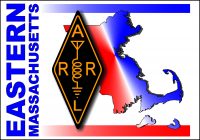

 Bob Salow, WA1IDA writes:
Bob Salow, WA1IDA writes: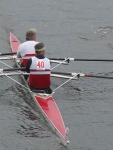 Jeff Arnold, N1FWV writes:
Jeff Arnold, N1FWV writes: Rob Macedo, KD1CY writes:
Rob Macedo, KD1CY writes: On September 25 from 11:00 a.m.-3:00 p.m. a CERT (Community Emergency Response Team) Family Day will be held in Ward Park in Marlborough. CERT Teams from across the state will be there, participating in competitions, games and demonstrations. Mobile command centers from the MA State Police, Massachusetts Emergency Management Agency, and Fire and Sheriffs Office will be on display.
On September 25 from 11:00 a.m.-3:00 p.m. a CERT (Community Emergency Response Team) Family Day will be held in Ward Park in Marlborough. CERT Teams from across the state will be there, participating in competitions, games and demonstrations. Mobile command centers from the MA State Police, Massachusetts Emergency Management Agency, and Fire and Sheriffs Office will be on display.  Hello to all:
Hello to all: Only if the storm goes north of the 30th parallel and is west of Boston’s longitude (71W), on a northerly course, will I order the standby mobilization for our entire section. Cape Cod, South Shore (Plymouth), and Bristol DEC’s may elect to accelerate that schedule, so please check with them. Timing of the Skywarn mobilization will most likely follow a different schedule, so please look for Rob’s specific guidance there.
Only if the storm goes north of the 30th parallel and is west of Boston’s longitude (71W), on a northerly course, will I order the standby mobilization for our entire section. Cape Cod, South Shore (Plymouth), and Bristol DEC’s may elect to accelerate that schedule, so please check with them. Timing of the Skywarn mobilization will most likely follow a different schedule, so please look for Rob’s specific guidance there. …..Amateur Radio Operators Should Treat This like a “Planned Exercise” and
…..Amateur Radio Operators Should Treat This like a “Planned Exercise” and Mike Neilsen, W1MPN, E. Mass. Section Emergency Coordinator discusses the potential threat from Hurricane Frances for New Englanders during the latter part of the Labor Day Holiday weekend:
Mike Neilsen, W1MPN, E. Mass. Section Emergency Coordinator discusses the potential threat from Hurricane Frances for New Englanders during the latter part of the Labor Day Holiday weekend: 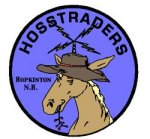 The bi-annual Hosstraders Hamfest happens October 1-2, 2004 at the Hopkinton State Fairgrounds, off I-89, Exit 7, in Hopkinton NH.
The bi-annual Hosstraders Hamfest happens October 1-2, 2004 at the Hopkinton State Fairgrounds, off I-89, Exit 7, in Hopkinton NH.
 Sumner Weisman, W1VIV writes on FraminghamARA-L:
Sumner Weisman, W1VIV writes on FraminghamARA-L: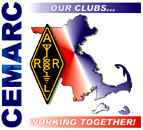 Frank Murphy, N1DHW writes on CEMARC-list:
Frank Murphy, N1DHW writes on CEMARC-list: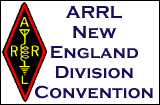 K1TW writes:
K1TW writes: